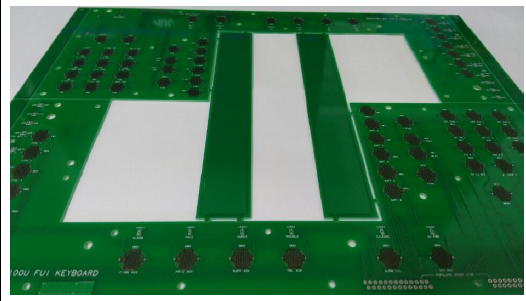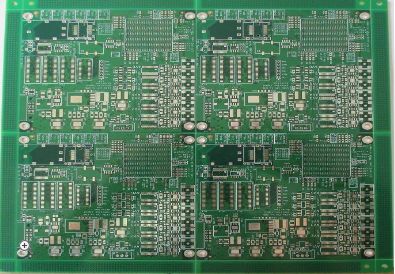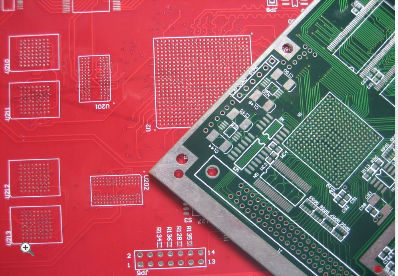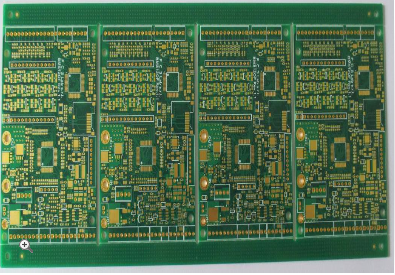-
 Agriculture
Agriculture
-
 Health-Care
Health-Care
-
 Environment
Environment
-
 Construction-Real-Estate
Construction-Real-Estate
-
 Tools-Hardware
Tools-Hardware
-
 Home-Garden
Home-Garden
-
 Furniture
Furniture
-
 Luggage-Bags-Cases
Luggage-Bags-Cases
-
 Medical-devices-Supplies
Medical-devices-Supplies
-
 Gifts-Crafts
Gifts-Crafts
-
 Sports-Entertainment
Sports-Entertainment
-
 Food-Beverage
Food-Beverage
-
 Vehicles-Transportation
Vehicles-Transportation
-
 Power-Transmission
Power-Transmission
-
 Material-Handling
Material-Handling
-
 Renewable-Energy
Renewable-Energy
-
 Safety
Safety
-
 Testing-Instrument-Equipment
Testing-Instrument-Equipment
-
 Construction-Building-Machinery
Construction-Building-Machinery
-
 Pet-Supplies
Pet-Supplies
-
 Personal-Care-Household-Cleaning
Personal-Care-Household-Cleaning
-
 Vehicle-Accessories-Electronics-Tools
Vehicle-Accessories-Electronics-Tools
-
 School-Office-Supplies
School-Office-Supplies
-
 Packaging-Printing
Packaging-Printing
-
 Mother-Kids-Toys
Mother-Kids-Toys
-
 Business-Services
Business-Services
-
 Commercial-Equipment-Machinery
Commercial-Equipment-Machinery
-
 Apparel-Accessories
Apparel-Accessories
-
 Security
Security
-
 Shoes-Accessories
Shoes-Accessories
-
 Vehicle-Parts-Accessories
Vehicle-Parts-Accessories
-
 Jewelry-Eyewear-Watches-Accessories
Jewelry-Eyewear-Watches-Accessories
-
 Lights-Lighting
Lights-Lighting
-
 Fabric-Textile-Raw-Material
Fabric-Textile-Raw-Material
-
 Fabrication-Services
Fabrication-Services
-
 Industrial-Machinery
Industrial-Machinery
-
 Consumer-Electronics
Consumer-Electronics
-
 Electrical-Equipment-Supplies
Electrical-Equipment-Supplies
-
 Electronic-Components-Accessories-Telecommunications
Electronic-Components-Accessories-Telecommunications
-
 Home-Appliances
Home-Appliances
-
 Beauty
Beauty
-
 Chemicals
Chemicals
-
 Rubber-Plastics
Rubber-Plastics
-
 Metals-Alloys
Metals-Alloys
- Masonry Materials
- Curtain Walls & Accessories
- Earthwork Products
- Fireproofing Materials
- Heat Insulation Materials
- Plastic Building Materials
- Building Boards
- Soundproofing Materials
- Timber
- Waterproofing Materials
- Balustrades & Handrails
- Bathroom & Kitchen
- Flooring & Accessories
- Tiles & Accessories
- Door, Window & Accessories
- Fireplaces & Stoves
- Floor Heating Systems & Parts
- Stairs & Stair Parts
- Ceilings
- Elevators & Escalators
- Stone
- Countertops, Vanity Tops & Table Tops
- Mosaics
- Metal Building Materials
- Multifunctional Materials
- Ladders & Scaffoldings
- Mouldings
- Corner Guards
- Decorative Films
- Formwork
- Building & Industrial Glass
- Other Construction & Real Estate
- Wallpapers/Wall panels
- HVAC System & Parts
- Outdoor Facilities
- Prefabricated Buildings
- Festive & Party Supplies
- Bathroom Products
- Household Sundries
- Rain Gear
- Garden Supplies
- Household Cleaning Tools & Accessories
- Lighters & Smoking Accessories
- Home Storage & Organization
- Household Scales
- Smart Home Improvement
- Home Textiles
- Kitchenware
- Drinkware & Accessories
- Dinnerware, Coffee & Wine
- Home Decor
- Golf
- Fitness & Body Building
- Amusement Park Facilities
- Billiards, Board Game,Coin Operated Games
- Musical Instruments
- Outdoor Affordable Luxury Sports
- Camping & Hiking
- Fishing
- Sports Safety&Rehabilitation
- Ball Sports Equipments
- Water Sports
- Winter Sports
- Luxury Travel Equipments
- Sports Shoes, Bags & Accessories
- Cycling
- Other Sports & Entertainment Products
- Artificial Grass&Sports Flooring&Sports Court Equipment
- Scooters
- Food Ingredients
- Honey & Honey Products
- Snacks
- Nuts & Kernels
- Seafood
- Plant & Animal Oil
- Beverages
- Fruit & Vegetable Products
- Frog & Escargot
- Bean Products
- Egg Products
- Dairy Products
- Seasonings & Condiments
- Canned Food
- Instant Food
- Baked Goods
- Other Food & Beverage
- Meat & Poultry
- Confectionery
- Grain Products
- Feminie Care
- Hair Care & Styling
- Body Care
- Hands & Feet Care
- Hygiene Products
- Men's Grooming
- Laundry Cleaning Supplies
- Travel Size & Gift Sets
- Room Deodorizers
- Other Personal Care Products
- Pest Control Products
- Special Household Cleaning
- Floor Cleaning
- Kitchen & Bathroom Cleaning
- Oral Care
- Bath Supplies
- Yellow Pages
- Correction Supplies
- Office Binding Supplies
- Office Cutting Supplies
- Board Erasers
- Office Adhesives & Tapes
- Education Supplies
- Pencil Cases & Bags
- Notebooks & Writing Pads
- File Folder Accessories
- Calendars
- Writing Accessories
- Commercial Office Supplies
- Pencil Sharpeners
- Pens
- Letter Pad/Paper
- Paper Envelopes
- Desk Organizers
- Pencils
- Markers & Highlighters
- Filing Products
- Art Supplies
- Easels
- Badge Holder & Accessories
- Office Paper
- Printer Supplies
- Book Covers
- Other Office & School Supplies
- Stationery Set
- Boards
- Clipboards
- Stamps
- Drafting Supplies
- Stencils
- Electronic Dictionary
- Books
- Map
- Magazines
- Calculators
- Baby & Toddler Toys
- Educational Toys
- Classic Toys
- Dress Up & Pretend Play
- Toy Vehicle
- Stuffed Animals & Plush Toys
- Outdoor Toys & Structures
- Balloons & Accessories
- Baby Food
- Children's Clothing
- Baby Supplies & Products
- Maternity Clothes
- Kids Shoes
- Baby Care
- Novelty & Gag Toys
- Dolls & Accessories
- Puzzle & Games
- Blocks & Model Building Toys
- Toddler Clothing
- Baby Clothing
- Kids' Luggage & Bags
- Arts, Crafts & DIY Toys
- Action & Toy Figures
- Baby Appliances
- Hobbies & Models
- Remote Control Toys
- Promotional Toys
- Pregnancy & Maternity
- Hygiene Products
- Kid's Textile&Bedding
- Novelty & Special Use
- Toy Weapons
- Baby Gifts
- Baby Storage & Organization
- Auto Drive Systems
- ATV/UTV Parts & Accessories
- Marine Parts & Accessories
- Other Auto Parts
- Trailer Parts & Accessories
- Auto Transmission Systems
- Train Parts & Accessories
- Universal Parts
- Railway Parts & Accessories
- Auto Brake Systems
- Aviation Parts & Accessories
- Truck Parts & Accessories
- Auto Suspension Systems
- Auto Lighting Systems
- New Energy Vehicle Parts & Accessories
- Auto Steering Systems
- Wheels, Tires & Accessories
- Bus Parts & Accessories
- Auto Performance Parts
- Cooling System
- Go-Kart & Kart Racer Parts & Accessories
- Air Conditioning Systems
- Heavy Duty Vehicle Parts & Accessories
- Auto Electrical Systems
- Auto Body Systems
- Auto Engine Systems
- Container Parts & Accessories
- Motorcycle Parts & Accessories
- Refrigeration & Heat Exchange Equipment
- Machine Tool Equipment
- Food & Beverage Machinery
- Agricultural Machinery & Equipment
- Apparel & Textile Machinery
- Chemical Machinery
- Packaging Machines
- Paper Production Machinery
- Plastic & Rubber Processing Machinery
- Industrial Robots
- Electronic Products Machinery
- Metal & Metallurgy Machinery
- Woodworking Machinery
- Home Product Manufacturing Machinery
- Machinery Accessories
- Environmental Machinery
- Machinery Service
- Electrical Equipment Manufacturing Machinery
- Industrial Compressors & Parts
- Tobacco & Cigarette Machinery
- Production Line
- Used Industrial Machinery
- Electronics Production Machinery
- Other Machinery & Industrial Equipment
- Camera, Photo & Accessories
- Portable Audio, Video & Accessories
- Television, Home Audio, Video & Accessories
- Video Games & Accessories
- Mobile Phone & Accessories
- Electronic Publications
- Earphone & Headphone & Accessories
- Speakers & Accessories
- Smart Electronics
- TV Receivers & Accessories
- Mobile Phone & Computer Repair Parts
- Chargers, Batteries & Power Supplies
- Used Electronics
- VR, AR, MR Hardware & Software
- Projectors & Presentation Equipments
- Other Consumer Electronics
- Cables & Commonly Used Accessories
- Computer Hardware & Software
- Displays, Signage and Optoelectronics
- Discrete Semiconductors
- Wireless & IoT Module and Products
- Telecommunications
- Connectors, Terminals & Accessories
- Development Boards, Electronic Modules and Kits
- Circuit Protection
- Sensors
- Isolators
- Audio Components and Products
- Integrated Circuits
- Power Supplies
- Relays
- RF, Microwave and RFID
- Electronic Accessories & Supplies
- Passive Components
- PCB & PCBA
- Air Quality Appliances
- Home Appliance Parts
- Heating & Cooling Appliances
- Small Kitchen Appliances
- Laundry Appliances
- Water Heaters
- Water Treatment Appliances
- Refrigerators & Freezers
- Personal Care & Beauty Appliances
- Major Kitchen Appliances
- Cleaning Appliances
- Second-hand Appliances
- Smart Home Appliances
- Other Home Appliances
- Energy Chemicals
- Inorganic Chemicals
- Basic Organic Chemicals
- Agrochemicals
- Admixture & Additives
- Catalysts & Chemical Auxiliary Agents
- Pigments & Dyestuff
- Coating & Paint
- Daily Chemicals
- Polymer
- Organic Intermediate
- Adhesives & Sealants
- Chemical Waste
- Biological Chemical Products
- Surface Treatment Chemicals
- Painting & Coating
- Chemical Reagents
- Flavor & Fragrance
- Non-Explosive Demolition Agents
- Other Chemicals
- Custom Chemical Services
Innovative PCB Layout for Visualization Systems Ensuring Optimal Signal Integrity and Thermal Management
In the rapidly evolving field of visualization systems, such as high-resolution displays, virtual reality headsets, and medical imaging devices, the demand for faster data processing and superior image quality has never been higher. These systems rely on complex printed circuit boards (PCBs) to manage high-speed signals and dissipate heat effectively, making the PCB layout a critical factor in overall performance. An innovative PCB layout is not merely about connecting components; it is a sophisticated engineering discipline that ensures optimal signal integrity and thermal management, directly impacting system reliability, efficiency, and user experience. As visualization technologies push the boundaries of data rates and power consumption, traditional layout approaches often fall short, leading to issues like signal degradation, electromagnetic interference, and overheating. This article delves into the key aspects of cutting-edge PCB design strategies that address these challenges, providing a foundation for developing robust visualization systems that meet modern demands.
Advanced Signal Integrity Techniques
Signal integrity is paramount in visualization systems, where high-speed data transmission must occur without distortion or loss. As clock speeds and data rates increase, phenomena such as crosstalk, reflections, and attenuation can severely degrade performance. To combat this, innovative PCB layouts employ controlled impedance routing, which involves precisely calculating trace widths and dielectric properties to match the characteristic impedance of transmission lines. This minimizes signal reflections and ensures clean data transfer, crucial for maintaining the fidelity of visual outputs in applications like 4K video streaming or real-time rendering.
Furthermore, the use of differential signaling pairs, such as those in LVDS or PCIe interfaces, helps reject common-mode noise and enhances signal robustness. By routing these pairs closely together with consistent spacing, designers can cancel out electromagnetic interference, preserving signal quality across long distances on the board. Additionally, incorporating ground planes and shielding techniques isolates sensitive analog and digital sections, reducing the risk of noise coupling. Simulation tools play a vital role here, allowing engineers to model signal behavior before fabrication and optimize layouts for minimal bit error rates, ultimately supporting the high-bandwidth requirements of next-generation visualization systems.
Effective Thermal Management Strategies
Thermal management is equally critical in visualization systems, as high-power components like GPUs, FPGAs, and LED drivers generate significant heat that can lead to premature failure or performance throttling. Innovative PCB layouts integrate thermal vias, which are plated holes that conduct heat from hot components to inner layers or heat sinks, effectively spreading thermal energy across the board. This approach prevents localized hotspots and maintains component temperatures within safe operating limits, ensuring long-term reliability in demanding environments such as automotive displays or industrial monitors.
Another key strategy involves the strategic placement of components and copper pours to enhance heat dissipation. By arranging high-power devices in areas with ample airflow and using thick copper layers for power planes, designers can improve thermal conductivity and reduce resistance. Thermal simulation software aids in predicting temperature distributions, enabling adjustments like adding heat sinks or fans during the design phase. Moreover, materials with high thermal conductivity, such as metal-core PCBs or advanced substrates, are increasingly adopted for visualization systems to handle extreme thermal loads, supporting sustained performance without compromising signal integrity.
Power Integrity and Distribution Network Design
A stable power distribution network (PDN) is essential for maintaining signal integrity and thermal performance in visualization systems. Fluctuations in power supply can introduce noise and jitter, degrading high-speed signals and causing visual artifacts. Innovative layouts address this by implementing decoupling capacitors placed close to power pins, which filter out high-frequency noise and provide localized charge storage. This ensures a clean and steady voltage supply, critical for components like processors and memory that demand rapid current transitions.
Additionally, the use of multilayer PCBs with dedicated power and ground planes minimizes impedance in the PDN, reducing voltage drops and improving efficiency. By carefully planning the stack-up and via placements, designers can create low-inductance paths for current flow, which also aids in thermal management by distributing heat more evenly. Power integrity analysis tools help optimize these aspects, simulating transient responses and identifying potential issues early in the design process. This holistic approach to power integrity not only enhances signal quality but also contributes to overall system energy efficiency, a key consideration for portable visualization devices like augmented reality glasses.
EMI/EMC Considerations and Shielding
Electromagnetic interference (EMI) and electromagnetic compatibility (EMC) are major concerns in visualization systems, where high-frequency operations can emit radiation that interferes with other devices or fails regulatory standards. Innovative PCB layouts incorporate shielding techniques, such as grounded metal cans or ferrite beads, to contain EMI from noisy components. Proper grounding schemes, including star grounding or split planes, help minimize ground loops and reduce common-mode emissions, ensuring that the system operates reliably in crowded electromagnetic environments.
Moreover, careful routing of high-speed traces away from sensitive areas and the use of guard traces or stitching vias can further suppress EMI. EMC pre-compliance testing during the design phase allows for iterative improvements, such as adjusting layer stack-ups or adding filters, to meet international standards like FCC or CE. By addressing EMI/EMC proactively, designers can prevent costly redesigns and ensure that visualization systems perform flawlessly in real-world applications, from consumer electronics to medical imaging equipment.
Integration of Advanced Materials and Technologies
The adoption of advanced materials and technologies is revolutionizing PCB layouts for visualization systems. Flexible and rigid-flex PCBs, for instance, enable compact and lightweight designs ideal for wearable visualization devices, while maintaining signal integrity through bend-resistant traces. Materials with low dielectric constants and loss tangents, such as Rogers or Teflon-based substrates, are used to support high-frequency signals without significant attenuation, which is crucial for 5G-enabled augmented reality systems.
Furthermore, embedded component technology, where passive or active devices are integrated within the PCB layers, reduces board size and improves thermal and signal performance by shortening interconnection paths. Additive manufacturing and 3D printing techniques are also emerging, allowing for rapid prototyping and custom geometries that enhance heat dissipation. As these innovations evolve, they empower designers to create more efficient and reliable visualization systems, pushing the envelope of what is possible in terms of speed, size, and functionality.
REPORT































































































































































































































































































































































































































































































































































































